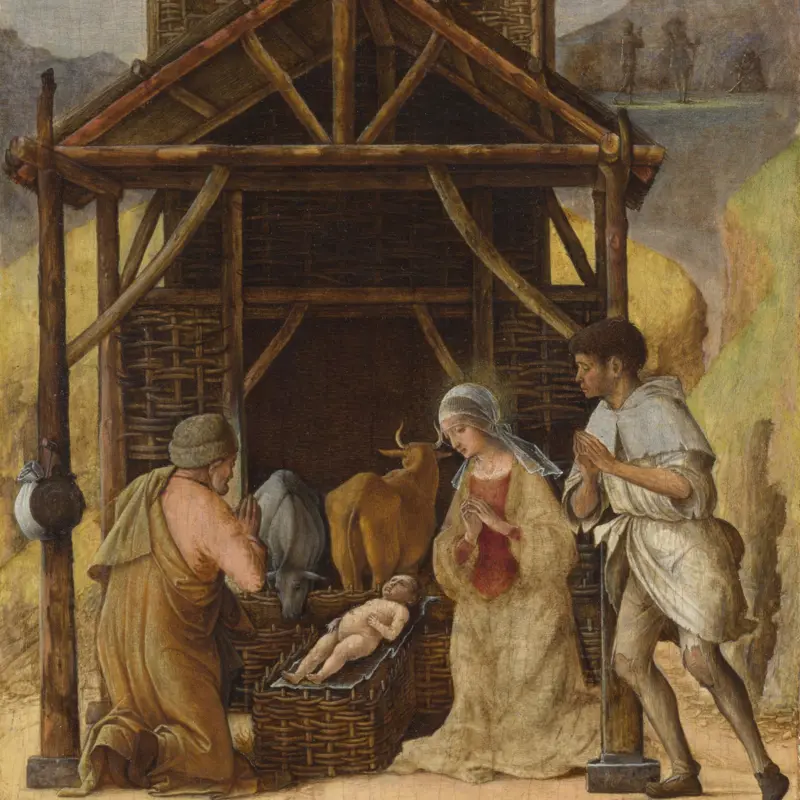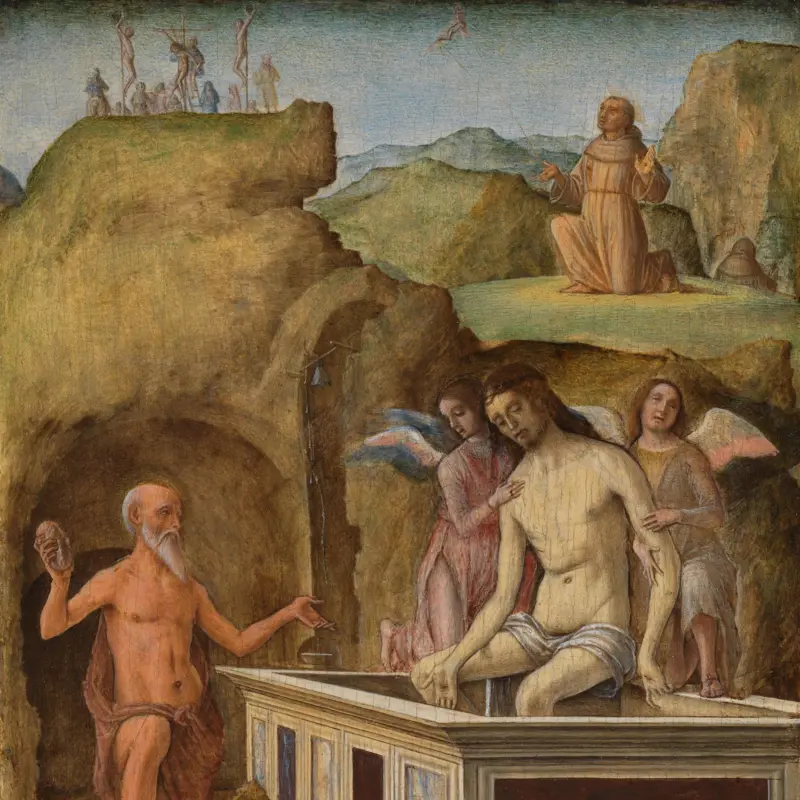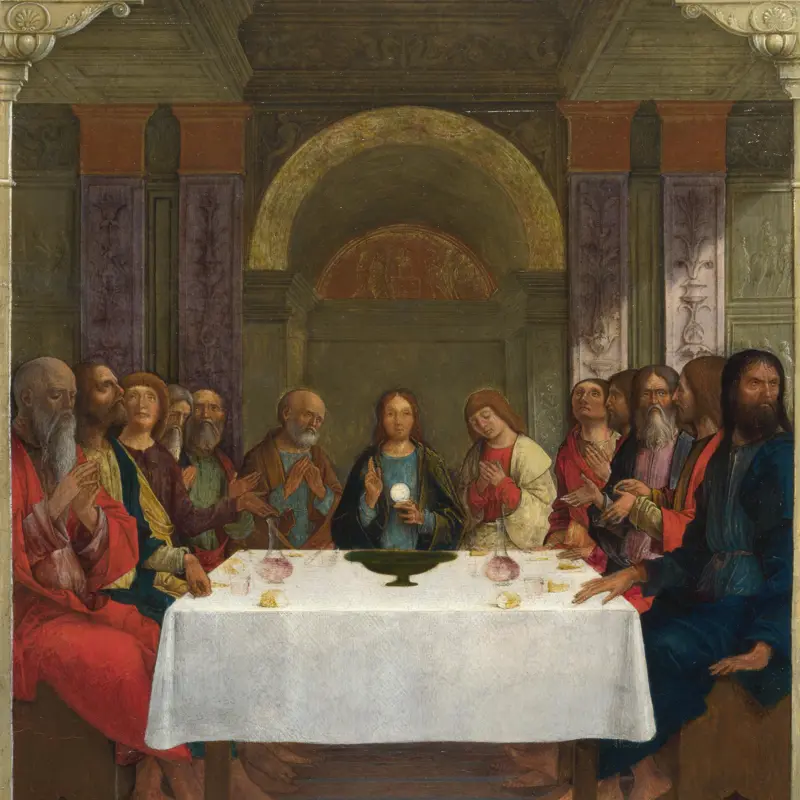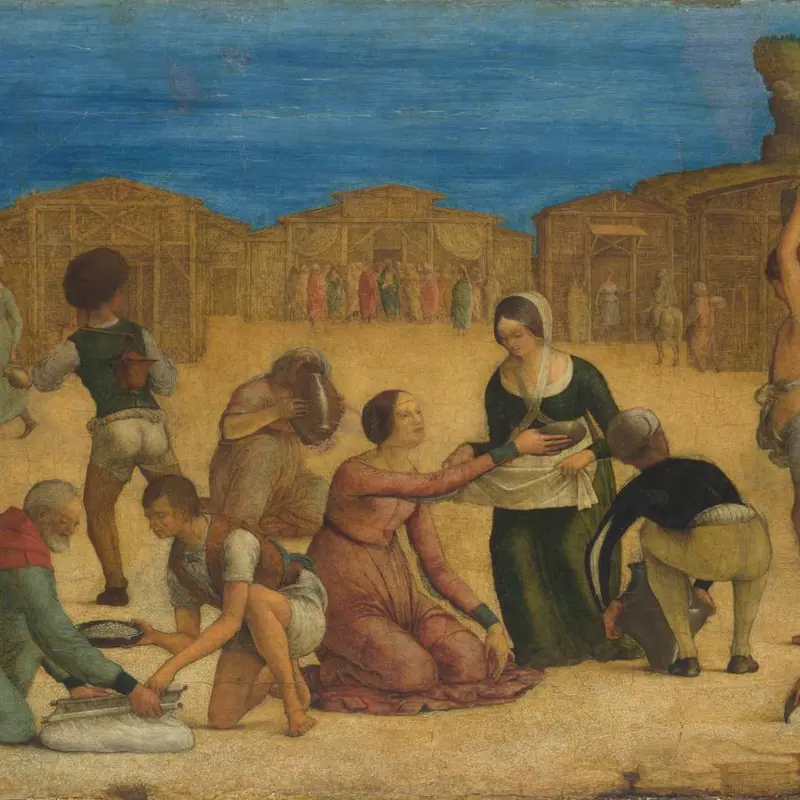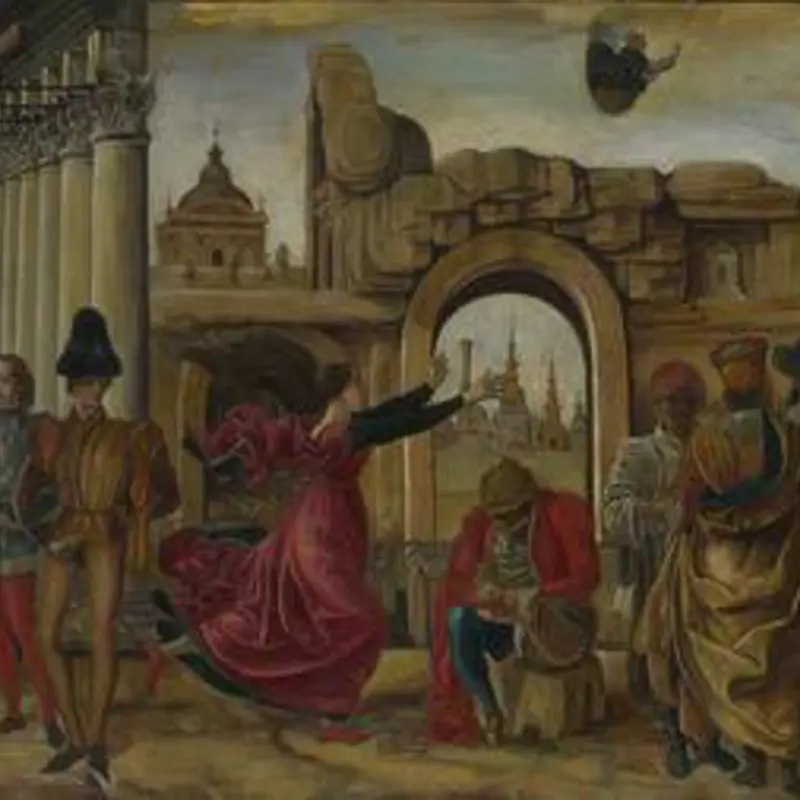Ercole de' Roberti, 'The Dead Christ', about 1490
About the work
Overview
This little picture formed the right side of a diptych (a work of two parts). It was joined with central hinges to The Adoration of the Shepherds. Ercole made this for the Duchess of Ferrara, Eleonora of Aragon, when he was court painter at Ferrara. Eleonora’s personal prayer centred on the Corpus Christi (Latin for ‘body of Christ’), so this imagery is appropriate. Christ is shown nearly naked, just after his death. Two angels prop up his limp corpse and we can see marks from the nails of the Crucifixion on his hands. A faintly sketched image of Calvary, the site of the Crucifixion, appears on the hill; Christ’s slumped body is being removed from the central cross. Saint Jerome – identifiable by his symbol, the lion – kneels next to Christ’s tomb. He holds a rock, ready to strike his chest. This was an act of penitence which in this context was probably supposed to encourage humility and self denial.
Key facts
Details
- Full title
- The Dead Christ
- Artist
- Ercole de' Roberti
- Artist dates
- Active 1479; died 1496
- Part of the group
- The Este Diptych
- Date made
- About 1490
- Medium and support
- Egg tempera on wood
- Dimensions
- 17.8 × 13.5 cm
- Acquisition credit
- Bought, 1894
- Inventory number
- NG1411.2
- Location
- Room 51
- Collection
- Main Collection
- Previous owners
- Frame
- 15th-century Italian Frame
Provenance
Additional information
Text extracted from the ‘Provenance’ section of the catalogue entry in Martin Davies, ‘National Gallery Catalogues: The Earlier Italian Schools’, London 1986; for further information, see the full catalogue entry.
Exhibition history
-
2014Making ColourThe National Gallery (London)18 June 2014 - 7 September 2014
-
2023Ercole de' Roberti e Lorenzo CostaPalazzo dei Diamanti18 February 2023 - 19 June 2023
Bibliography
-
1951Davies, Martin, National Gallery Catalogues: The Earlier Italian Schools, London 1951
-
1986Davies, Martin, National Gallery Catalogues: The Earlier Italian Schools, revised edn, London 1986
-
2001
C. Baker and T. Henry, The National Gallery: Complete Illustrated Catalogue, London 2001
About this record
If you know more about this work or have spotted an error, please contact us. Please note that exhibition histories are listed from 2009 onwards. Bibliographies may not be complete; more comprehensive information is available in the National Gallery Library.
Images
About the group: The Este Diptych
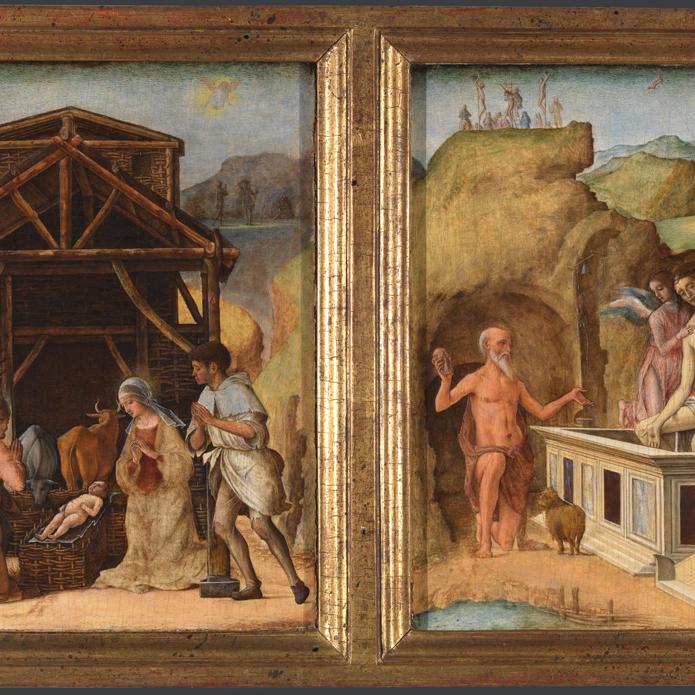
Overview
The Adoration of the Shepherds and The Dead Christ were originally joined with hinges to form a diptych – an object made up of two painted panels – that could open and close, creating a visual prayer book. It probably belonged to Eleonora of Aragon, Duchess of Ferrara. An inventory of her possessions records just such a work, covered in cherry-red velvet; traces of red velvet remain on the back of these two pictures. The images portray the beginning and end of Christ’s life but the focus is on his body.
Eleonora was particularly devoted to the Corpus Christi (‘the body of Christ’). She played a prominent role in the annual feast that celebrated the institution of the Eucharist at the Last Supper, when Christ instructed his disciples to drink wine and eat bread in commemoration of his blood and body. She was closely connected to a religious group that focused their prayer upon the Corpus Christi and was buried in their church in Ferrara.

